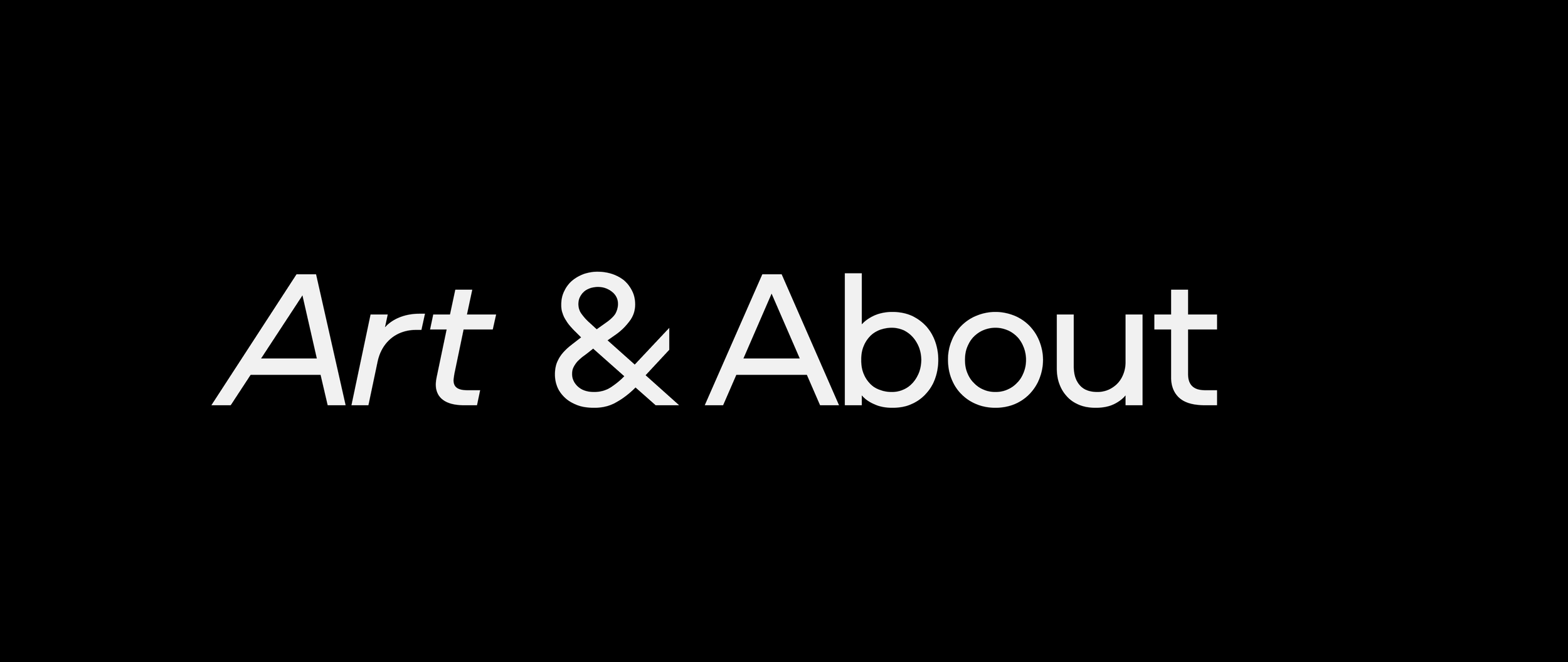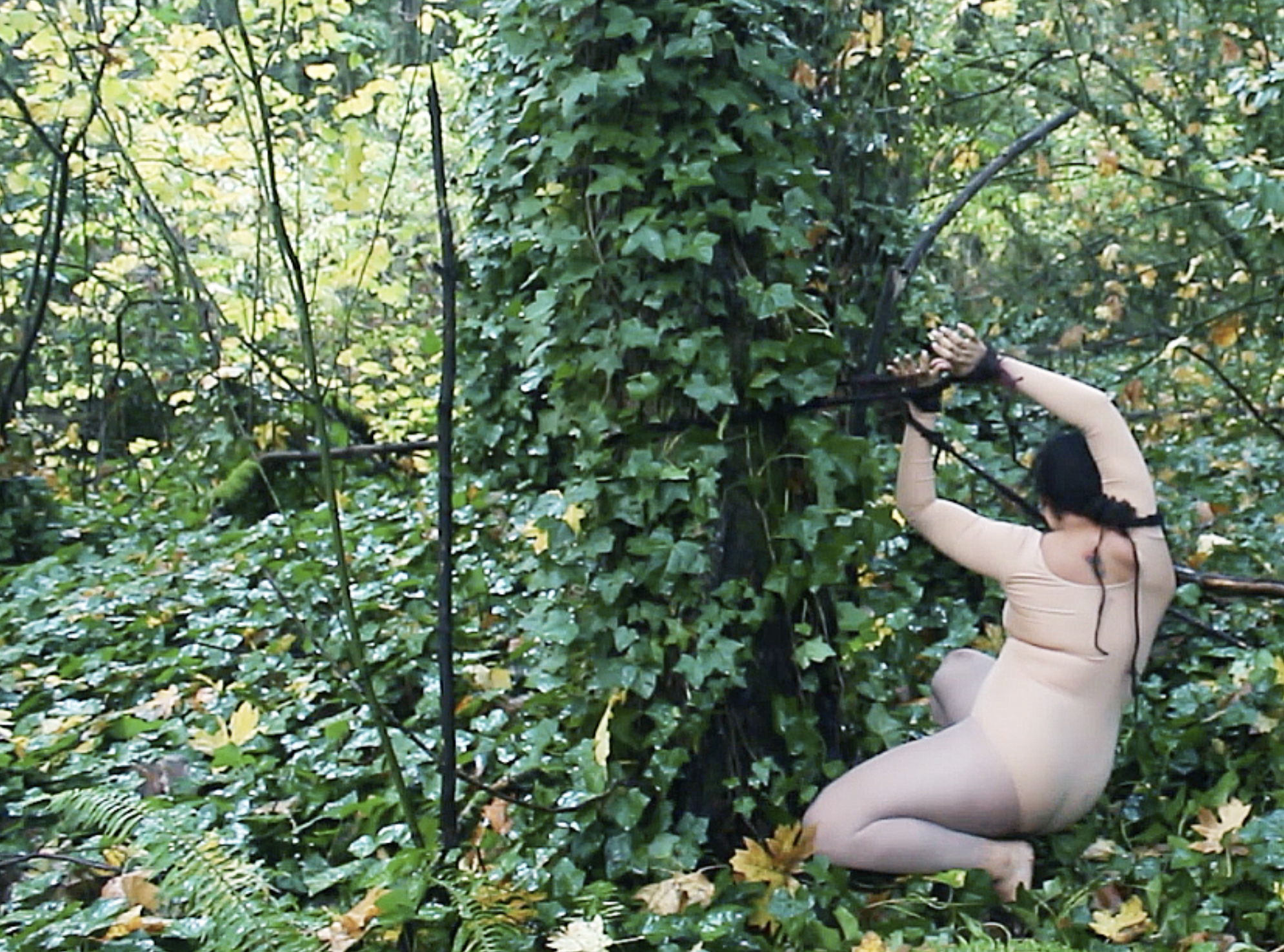"Entanglement at Night"
By ELLA RAY
Nighttime is both literally the period of darkness between our days and, more figuratively, scaffolding for a kind of exploration/dreaming/desire that possibly can’t exist in the daylight. When the sky turns black and the hum of the public quiets, we are left with enough stillness to re-envision our relationships to space, time, and self. Entanglement at Night, presented exclusively between 8 pm - 7 am through the windows at Paragon Gallery, tends to the linkages between bodies and landscapes--slowly revealing the slippage between the viewer, the performers, and our shared environments. This collection of video works by artists, and frequent collaborators, Jaleesa Johnston, maximiliano, and Sarah Brahim illuminates the sidewalk of N Killingsworth St. through moving landscapes and slightly obscured, but intriguing audio.
A stream of headlights and neon signs danced across the windows as I viewed the exhibition. These unrehearsed stimuli augmented my experience of blvk GVLVHVD re_cut, 2019 / 2021, by maximiliano. The immensity of the video feels pushed further by the exhibition’s setting. Cut between an array of multimedia performance footage, we see the fabric draped artist move in and out of the lush forest, warped images of Rococo paintings that appear almost like a heat map, a timelapse of N Killingsworth St. from the vantage point of the gallery, and the harrowing scene in City of God (2002) where Benny is killed. maximiliano blurs tenses and place in a manner that exposes a fluidity of exhibition and reality through this careful assemblage.
Sarah Brahim’s Metamorphosis deals with landscapes through specific, yet poetic means. Set in the dunes, with blue sky kissing the peaks of beige landmass, there is no sound but the wind. Brahim’s hands appear--clasping together, pulling apart, tracing the contours of what feels like an imaginary boundary. Eventually, Brahim nonchalantly pops up from behind the rock that concealed her and exits left. The artist spreads her arms out and twirls her body off camera and this abrupt transition feels adapt considering the title of the work. Through dance, Brahim exposes that the borders, cocoons, and containers that seek to harness are temporary and, maybe more importantly, arbitrary.
maximiliano, blvk GVLVLHVD : RE_CVT, 2019 / 2021, blvk GVLVHVD mythos, ongoing, video, 9:21 min. (still image)
Sarah Brahim, Metamorphosis, 2021, video, 3:04 min. (still image)
Jaleesa Johnston, Tether, 2018-2021, video, 4:00 min. (still image)
The final video in the exhibition, Tether by Jaleesa Johnston, features multiples of the artist attaching and then removing her braid to and from branches in a wooded area. The baby pink, lavender, and grass green abstract forest are contrasted by the black contours of foliage and by Johnston who appears almost like a shadow. She dances, stretches, and contorts her body as she remains tethered to the trees by her hair. Repeatedly she frees herself and then connects to another limb, maintaining tension, but not a struggle, between the body and the environment-- the violence of the image of a Black woman tied to a tree is heightened and, to some degree, quelled through the eb and flow of autonomy.
Nightfall provides the ideal backdrop for this exhibition. The street does not distract but extends fruitful ground for the artists to stretch their bodies, boundaries, and technologies to an audience conceivably doing the same. Entanglement at Night is a thoughtful presentation of video work that makes a case for exhibition-making and exhibition-experiencing outside of business hours.
As a writer, art historian, and visual artist, Ella Ray produces texts, environments, and exhibitions that imagine, and attempt to realize, worlds otherwise for Black people. Through an interdisciplinary approach, including an ongoing research and writing practice, building classroom curricula, object making, and printed matter, Ella Ray seeks to go beyond institutional critique to create sustainable ecosystems for Black artists, including themself.
Window view with videos from left to right: maximiliano, blvk GVLVLHVD : RE_CVT, 2019 / 2021, blvk GVLVHVD mythos, ongoing, video, 9:21 min.; Sarah Brahim, Metamorphosis, 2021, video, 3:04 min.; Jaleesa Johnston, Tether, 2018-2021, video, 4:00 min. Photographs by Mario Gallucci.




